P.PSH.1399 - Fit to Lamb Phase One: lamb mortality database and field work
The Fit to Lamb project will develop a database of existing from Australia and other countries with similar sheep production systems including New Zealand, South Africa and Uruguay?
| Project start date: | 13 June 2022 |
| Project end date: | 15 November 2025 |
| Publication date: | 21 October 2025 |
| Project status: | Completed |
| Livestock species: | Sheep |
Summary
Fit to Lamb Phase One will combine data from countries including Australia, New Zealand, South Africa and Uruguay, while also incorporating the completion of the necropsy dataset from the Chiswick Merino Lifetime Productivity site, providing necropsy data over a 5-year period. Re-analyses of this pooled data will identify known and potential risk factors for different causes of death in lambs, including dystocia, to inform future R&D priorities. This will inform recommendations for management and selection strategies specific to ewe age, lamb birth type, breed and production environments. Re-analysis of pooled datasets will inform future R&D priorities and reduce duplication.
Objectives
The project achieved the following objectives:
1. Developed comprehensive baseline data for dystocia risk (plus other causes of death) to inform benchmarking and assessment of progress in reducing dystocia-related mortalities.
2. Established a database to determine lamb mortality risk and cause of death, combining data from multiple research projects and centres, and modelling to inform decision-support tools.
3. Identified opportunities to use genetics, nutrition and management to reduce impacts of dystocia and improve lamb survival for a range sheep genotypes and production systems.
4. Developed guidelines for implementation in Australia as well as in other participating countries.
5. Developed RD&E priorities to address gaps and reduce potential for duplication.
6. Post-graduate training opportunities for at one livestock scientist, and career development opportunities within sheep industry for at least two exceptional early career researchers
7. Completion of SRSP and industry webinar (a minimum of two, to be agreed prior to completion) on the outcomes of the project.
8. Annual industry publications on project progress and outcomes
9. At least two peer reviewed scientific journal publications, with a minimum of one journal publication published in open access.
Key findings
• The updated dystocia mortality incidence data will inform economic modelling.
• Multiple-born lambs are at similar or increased risk of dying from dystocia compared to single-born lambs. Strategies to reduce dystocia impact and improve lamb survival should address risk factors for dystocia in all birth types.
• The project team proposed an evidence-based protocol for collecting and recording data on lamb survival and cause of death to inform future studies so that the data can be analysed as part of a broader dataset.
Benefits to industry
The findings from this project will be used to inform and identify future research priorities and can continually be built on over time to identify known and potential risk factors for different causes of death and lamb survival metrics.
MLA action
MLA will evaluate the findings of Phase One to determine whether a Phase Two is required.
Future research
It is anticipated that the results from Fit to Lamb Phase One will be evaluated for a subsequent Phase Two of the project.
More information
| Project manager: | Daniel Forwood |
| Contact email: | reports@mla.com.au |
| Primary researcher: | MURDOCH UNIVERSITY |


